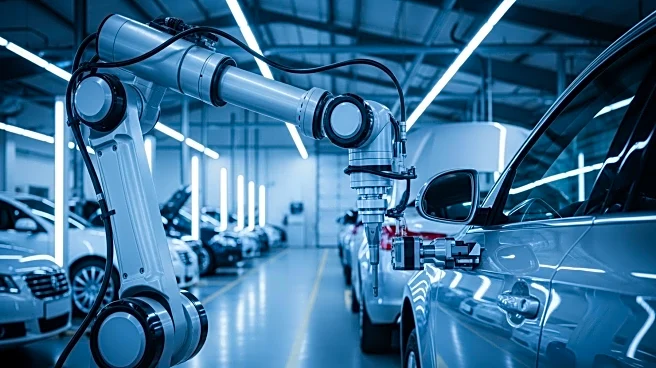What's Happening?
The integration of AI with Wi-Fi 7 technology is transforming network management, paving the way for autonomous self-driving networks. Wi-Fi 7, the latest advancement in wireless technology, offers enhanced speed and responsiveness, crucial for supporting the increasing demands of digital experiences. The expansion into the 6 GHz spectrum introduces wider channels and higher modulation, creating a complex RF environment. AI-native Radio Resource Management (RRM) is essential for managing this complexity, utilizing reinforcement learning to optimize channel selection, transmit power, and band steering. This approach ensures high-density, high-performance networks can meet real-time demands without manual intervention, enhancing user experiences in sectors like healthcare, education, and retail.
Why It's Important?
The convergence of AI and Wi-Fi 7 is significant for industries relying on high-speed, reliable wireless networks. As digital applications become more immersive, the need for intelligent network management grows. AI-powered networks can self-configure, monitor, and heal, reducing operational complexity and enhancing efficiency. This shift is crucial for IT leaders transitioning from reactive maintenance to autonomous operations, enabling them to meet escalating demands without increasing complexity. The adoption of AI-native RRM is not just beneficial but necessary for delivering consistent, high-quality user experiences, particularly in applications requiring low latency and high throughput.
What's Next?
The future of network management lies in accelerating automation across the entire lifecycle, from onboarding to ongoing optimization. IT teams must embrace AI-driven solutions to scale operations efficiently, ensuring networks remain balanced and resilient. The focus will be on integrating AI-native switches to support Wi-Fi 7's multi-gigabit speeds and power requirements, transforming the wired infrastructure into an active participant in network assurance. This approach will enable proactive remediation and anomaly detection, ensuring seamless data and power delivery to Wi-Fi 7 access points.
Beyond the Headlines
The evolution towards self-driving networks represents a paradigm shift in how enterprises design and operate wireless infrastructure. This transition highlights the growing importance of AI in network management, offering a glimpse into the future of digital connectivity. The move to AI-native operations not only addresses current challenges but also sets the stage for future innovations in network technology. As industries continue to adopt these advancements, the role of AI in shaping the digital landscape will become increasingly prominent.










